“The Christian religion is a parody on the worship of the Sun, in which they put a man whom they call Christ, in the place of the Sun, and pay him the same adoration which was originally paid to the Sun.” (Thomas Paine)
Modern-day Christianity often denigrates our ancient ancestors as a bunch of archaic fools, who had worshipped a plethora of pagan gods. It summarily dismisses some 14,000 years of human spirituality as ignominious myth believed by the gullible primitives. This kind of spiritual arrogance and religious pride has continued unchallenged for far too long. Perhaps, it is time to take a relook at the story of Christianity – the so called “Greatest Story Ever Told”. Is Christian faith anything superior to the ancient “paganism” it belittles? In fact, a close examination would reveal that the story of Jesus too has its roots in ancient cosmology.
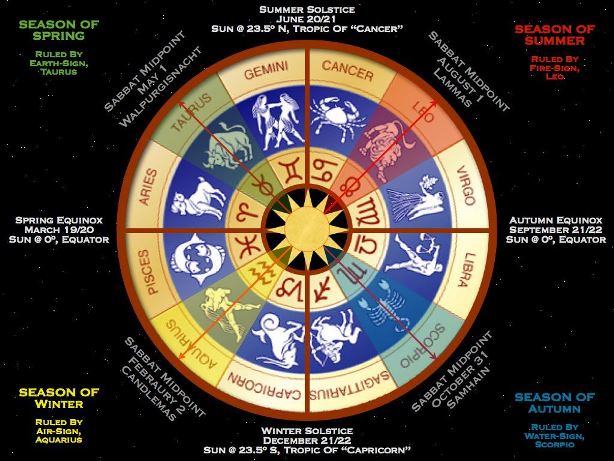
This article seeks to examine the story of Jesus Christ, the “Son of God”. The story may be an allegory on the “Sun of God” rather than a historical “Son of God”. Even the briefest discussion of the topic is difficult to be accommodated within the space of a single article. The discussions have, therefore, been split into two parts. In this Part-I, we discuss the basic elements of ancient cosmology. In the next part, we will look into how the Jesus Story parallels the ancient astrological concepts.
The Emergence of Astrolatry
In the “primordial world” of our ancient forefathers, life was a mixture of wonder and fear. And it was extremely distressful. Just finding food for one’s family was a life-and-death struggle. The person venturing out in search of victuals might himself become meal for another creature. This constant struggle to stay alive had put the ancient humans on the path to seek answers to the puzzle of life. When man realized that there were no clear answers forthcoming from the external universe, he turned inward. Eventually, he developed his own answers and his own gods.
The greatest enemy of humankind in the primitive world was the fearsome darkness of the night. The primitive man noticed that darkness enveloped his world, when the Sun departed. The dread of the night was vanquished on the arrival of daylight. He spent each night, waiting for the Sun to return. So, it is no surprise that man adopted the “Glorious Rising Orb of Day” as heaven’s greatest gift to the world. He reasoned that since no one on the Earth could ever claim ownership of the Sun, it must belong to the unseen Creator of the universe. Thus, figuratively speaking, the Sun that brought light was the “Sun of God” to them.
The primitive man soon realized that all life on Earth had depended directly on life-giving energy from the Sun. All life perished without the Sun. It followed that “God’s Sun” was “Our very Saviour.” Since evil and harm lurked in the darkness of the night, all harmful deeds were naturally the “Works of Darkness.” Consequently, it was conceived that the evil of night was ruled over by “The Prince of Darkness” -the Devil. Thus, the ancient man identified two cosmic powers – one virtuous and the other evil. One was life and the other, death. One was light and the other, the opposition to light. The opposition to light was “The Opposer” – the “Prince of the World of Darkness”.
The primitive man had nothing better to do when night fell, than observing the skies. He noticed that as the Sun went down, many other heavenly bodies appeared in the sky. They too gave light, but of a much lower intensity in comparison to the Sun. He also observed that many of these heavenly bodies were moving and periodically shifted their positions. So man associated deities with the heavenly bodies. And he started worshipping the deities behind the heavenly bodies – the Sun, moon and stars. Of course, the Sun was conceived as the chief deity.
The practice of worshipping the deities associated with the heavenly bodies is termed “Astrolatry.” The religious system based on the observation of the heavens is “Astro-Theology” (Astrotheology), a term obtained by combining the Greek word ‘astron’ (“star”) and ‘theology (“the study of God)”. Astrolatry is usually polytheistic, while Astrotheology allows for monotheism.
More than three thousand years before the arrival of Christianity, the early morning “Sun” had had been pictured in Egypt as the “New Born Babe.” The Egyptians gave that infant saviour, the name “Horus”. This wonderful child was “Born Again” every morning (Hallelujah!). Truly, the “Sun of God” was “The Light of the World”. The Egyptians knew that the Sun was at its highest point in the sky when no shadow was cast by the pyramids. At that point, all Egyptians offered prayers to the “Most High” God! They also saw that “God’s Sun” went to his death at sunset, wearing a “crown of thorns” or “corona.” Historically, kings have worn a round crown of spikes, symbolizing the rays of the Sun. Remember the Statue of Liberty!
In ancient days, humans kept track of times and seasons by observing the movement of the Sun – daily, monthly, yearly. They had created a devise – the sundial to mark these movements. Not only the daily movement of the Sun, but the whole year was charted on the round sundial. Ancient Mexican, Mayan, Inca, Aztec, Sumerian, Babylonian, Assyrian, Egyptian, Celtic, Aryan, etc. had adopted this system of tracking time by designing different types of sundial.
All the evidences apparently indicate that the founders of the primary form of religion were a sect of philosophers, known as Magi, or wise men, probably of the Aryan race of Central Asia. Their speculations relative to the “beginnings of things” were necessarily confined to the contemplation and study of nature. The Magi constructed a system of nature that had imagined the Earth as the centre of the universe.
In ancient times, people created stories that were allegories associated with their observations on the movement of the heavenly bodies and the annual passage of the Sun through its imaginary orbit with its twelve “Houses”. These allegories had personified the heavenly bodies as deities that deserve human worship. These anthropomorphic (man-like) gods of the ancient cosmological allegories thought, spoke and behaved like humans. The authors of these allegories claimed that their stories were composed under the inspiration of these self-same divinities. So, these allegories came to be designated as sacred texts. These texts were taught to the ignorant masses as literal histories.
Ancient religions of the world were mostly based on this primitive understanding of cosmology and the worship of the Sun. This, system of Astrolatry, that had originated in the Orient, after being remodelled in Egypt, became the prototype of all Occidental forms of worship. It was recognized, successively, as the state religion of the Grecian and Roman Empires. As these stories were passed down from generation to generation, the knowledge of what the stories originally represented was lost. People started believing that these allegorical accounts were true descriptions of historical events of some remote past. Perhaps, this very same system came to be perpetuated under the guise of Christianity.
Thus, the primary religion was founded on the worship of personified nature. It came to be termed paganism. It accorded special homage to the imaginary genii of the stars, and the greatest adoration was to the supreme divinity that supposedly resided in the Sun. This religious system was anciently known by the general name of Astrolatry, and by the more specific one of Solar Worship. Its founders gave the name Astrology to its dogmatic element. The Earth, the Firmament, the Planets, the Constellations and the Zodiac were the main constituents of this astrological system of nature.
Let us briefly examine these constituents of the system:
The Earth
The people who had built the Astrological system had believed that the Earth was the only world. They had conceived the Earth as a vast circular plane or disk that was the fixed centre of the universe. All celestial luminaries revolved around the Earth. Thus, the ancient astronomers had conceived a geocentric universe. To meet the requirement of the doctrine of future rewards and punishments, they divided it into an upper and an underworld, connected by means of some dark and winding passage.
The Firmament
The firmament is the term used in the Bible to denote the sky. The firmament was considered as a solid dome supported by four pillars, designated as “the pillars of heaven”. The pillars of heaven rested upon the earth. These pillars might have been mountain peaks. That seems to explain why gods tend to be linked to mountains. The Jewish God Jehovah met Moses at the peak of Mounts Sinai – the “Mountain of God”. The ancient Astronomers had conceived little windows in the firmament – “the windows of heaven”. They had believed that it rained as and when God opened these windows and the water stored above the firmament poured down to the Earth. And rain ceased when God closed those “windows of heaven” (Genesis 6:11, 8:2, Job 26:11, Malachi 3:10).
The Planets
The primitive astronomers had understood the stars as burning torches suspended from underneath the firmament. These torches apparently revolved round the earth, for the sole purpose of giving it light and heat. The Magi had observed that seven of these stars visible to them had perceptible movements, in relation to the other luminaries. These seven – Sun, Moon, Mercury, Venus, Mars, Jupiter and Saturn – were designated as planets or wandering stars.
The Constellations
The Magi designated the celestial luminaries that had kept the same relation to each other as fixed stars. The fixed stars, visible to their naked eyes, were grouped into fort-eight Constellations. They gave names to these constellation and the stars of larger magnitude, for greater ease in locating and distinguishing them.
The Zodiac
The year was divided into 12 equal parts or months, represented by twelve of the named constellations. Each constellation was given a heavenly symbol or astrological “Sign” that was called a “House”. The names of the 12 “Houses” of the Zodiac, the signs attached to each constellation, and the period for which the Sun stays in each “House” in a year as it orbits around the Earth, are listed below:
♒ Aquarius (Water Bearer): January 20–February 18
♓ Pisces (Fish): February 19–March 20
♈ Aries (Ram): March 21–April 19
♉ Taurus (Bull): April 20–May 20
♊ Gemini (Twins): May 21–June 21
♋ Cancer (Crab): June 22–July 22
♌ Leo (Lion): July 23–August 22
♍ Virgo (Virgin): August 23–September 22
♎ Libra (Balance): September 23–October 23
♏ Scorpius (Scorpion): October 24–November 21
♐ Sagittarius (Archer): November 22–December 21
♑ Capricornus (Goat): December 22–January 19
(Please note that the constellations do not look anything like a signs representing them. For instance, Aquarius does not have any similarity to its sign of a man carrying a water pitcher. The constellations have more to do with the times of the year they appear and the significance of what happens at that time of year. Thus, the waterman (Aquarius) brings rains).
The Sun travelled from “House” to “House” each month, through a circular orbit and completed one cycle in one year. The Magi inscribed a circle representing the apparent orbit of the Sun (Ecliptic). The ecliptic was divided into 360 degrees to represent the days in a year. Since the Earth experiences four different seasons that repeat each year (spring, summer, autumn and winter), the ecliptic was quartered by drawing vertical and horizontal lines passing through its centre. (This quartering of the Zodiac created the symbol of a ‘cross’ within it.)
One end of the vertical line denoted the point of the winter solstice (December 21-22) and the other end, the summer solstice (June 20-22). The winter solstice marks the shortest day and the longest night of the year. The summer solstice marks the longest day and shortest night of the year. One end of the horizontal line indicated the spring (Vernal) equinox (September 22-23) and the other end, the autumn equinox (March 20-21). (The word equinox is derived from two Latin words – aequus (equal) and nox (night)). The equinoxes mark the “nearly” equal amount of daylight and darkness of the year.
This circular diagram representing the 12 constellations and their signs, was ultimately, designated as the Zodiac. (See picture) The Zodiac represented the complete story of the life of “God’s Sun.” Since the vertical and horizontal lines quartering the Zodiac made the symbol of the cross, it may be said that the life of “God’s Sun” was on “the Cross.” This explains the circle (or the image of the Sun), we still find in the centre of the crosses of some Christian churches. Incidentally, the famous painting of “The Last Supper” of Jesus portrays the 12 disciples of the “Son of God” in four groups of three each – two groups each on either side of Jesus sitting in the centre. The picture apparently represents the Zodiac – the Sun and the 12 constellations divided into four seasons of the year of three months each!
The Sacred Number 7 & 12
The numbers seven (the count of planets) and twelve (the count of constellations) were recognized as sacred by the ancient Astrologers. These numbers are frequently encountered in the Bible. In the Zodiacal allegories, the deities of the planets were designated as spirits or messengers to the Supreme Deity enthroned above the firmament. In the Bible, we find this described in the Book of Revelation, “In front of the throne, seven lamps were blazing. These are the seven spirits of God” (Revelation 4:5). This is represented by the seven branched lamp (menorah) of Judaism and the seven candlesticks set before the altars in Catholic, and in some Protestant churches. The central light is for the Sun. The astrological planets Moon, Mercury and Venus are on one side and Mars, Jupiter and Saturn on the other.
Among the numerous dedications to the deities of the planets are the seven days of the week, the seven-day creation in the Bible, the seven stories of the tower of Babylon, the seven gates of Thebes, the seven piped flute of Pan, the seven stringed lyre of Apollo, the seven books of fate, the book of seven seals in the biblical book of Revelation and the jubilee of seven times seven years in the Jewish Bible (Old Testament).
Some of the dedications to the twelve signs are the twelve months of the year, the grand cycle of 12,000 years, the twelve altars of James, the twelve labours of Hercules, the twelve divisions of the Egyptian Labyrinth, the twelve shields of Mars, the twelve precious stones, ranged in threes to denote the seasons, in the breastplate of the High Priest, the twelve foundations of the Sacred City, referred to in the Book of Revelation, the twelve sons of Jacob, the twelve tribes of Israel, and the twelve Disciples of Jesus. (In the biblical Book of Revelation alone the number 7 is repeated twenty-four times, and the number 12 fourteen times.)
Recent researches among the ruins of ancient cities have revealed that several centuries before the beginning of our era, astronomers had discovered the true (Heliocentric) system of nature. But, since religion had been based upon the geocentric system, it was deemed prudent not to teach it to the masses. The truth was hence hidden away among the other secrets of the esoteric philosophy and apparently lost during the Middle Ages. And when this was rediscovered, the hierarchy of the Church of Rome resorted to inquisitorial tortures to suppress its public disclosure. The reason was that that a heliocentric system was contrary to the teachings of the Scripture. In spite of all the efforts of the Church to suppress this truth, it has now been universally accepted. However, the religious system designed on the basis of this geocentric system still continues.
In our present culture of digital watches and wall calendars, most of us never look at the stars or pay any attention to the position of the Sun in the sky. So, it is not surprising that we have lost the original astronomical meaning of the Zodiacal allegories. Apparently, the parallels between Christian metaphors and the natural reality of the Sun and other heavenly bodies are quite striking!
(How does the Jesus Story parallel the Zodiacal allegory? This we will discuss in Part-II, to be published next week).
————————————


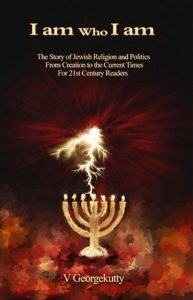
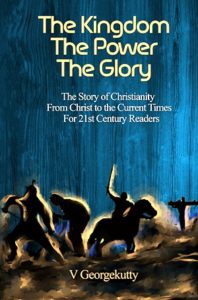



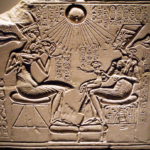
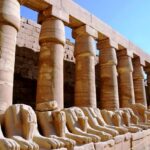
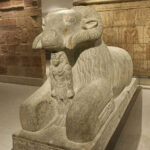
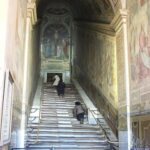
The story of this man called Jesus can only found in one book.
The Holy Bible, the New Testament. No where else can you find mention of him or any of the many characters found in any of the stories written in that time.
It’s all so confusing to me, having grown up in a so called Christian environment.
But even back then I felt there was more to the story. Now at 62 yrs old, I’m in what I call “Repair Mode” of the damage that was done for so many years. I honestly feel that we’ve been handed some misleading information, all designed to control the human population.
Everything in this article makes sense.
I actually connect more to this “Sun” of GOD theory than the other. Thanks for sharing your thoughts. For those of us who have been victims of this wave of Spiritual Mutilation, this is welcomed insight
S.C.P. October, 2023